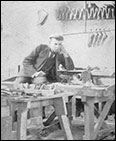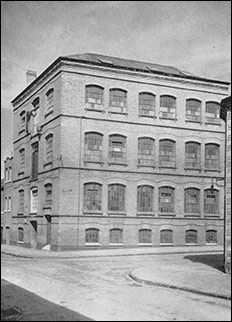|
||||||
| Article by Sue Comont from documents in the Northamptonshire Record Office, Ref: OR (M) 209 - 212 | ||||||
|
The Story of Sargent's Partnership 1903 - 1919
|
||||||
|
||||||
The two men, William and Walter Sargent, were both to devote all their time to running the business but Emily Bradfield was to be at liberty to only devote such time and attention as she considered necessary. None of the partners was to be involved in any other business without the permission of the other two. Each partner could draw £2 a week out of the partnership funds and provision was made for this to be increased by mutual agreement from time to time. However, if when the accounts were drawn up, the share of any partner in the profits was less than they had already drawn, they were to be obliged to refund the difference. No partner could lend money or give credit without the permission of the others, nor could any one of them discharge any workman, clerk or servant except for flagrant misconduct. After payment of the rent, rates, wages and all other expenses, including £1 a week to William Sargent, grandfather of William Edward Sargent, the profits were to be distributed half yearly to the partners. Emily Bradfield and William Edward Sargent were each to have a two fifths share while Walter had the remaining fifth. Partners could retire from the business at any time by leaving a letter giving three months notice of their intention at both the place of business and the private residence of each of the other partners who were at liberty to purchase the share of the retiring partner. Arrangements were set out for dealing with the death or bankruptcy of a partner, or the dissolution of the partnership for any reason. Finally, any dispute or difficulties arising between the partners were to be referred to two arbitrators subject to the provisions of the Arbitration Act of 1889. On 18 November 1905 the partners felt the need to make a further agreement. According to this, Emily Bradfield could only draw 30 shillings (£1.50) a week from the partnership’s funds, while the two men could each take £3. In consideration of his increased money, Walter had to promise that he would not retire from the partnership within 5 years. 1 December 1911 saw the partners again at the lawyers’ office for a further agreement. Emily’s weekly money was reduced to £1 a week while each of the two men received a further 10s (50p) a week. The capital of the partnership was given again. It had risen from the £4,199 of 1903 to £6,125, of which £3,376 16s (£3,376.80) belonged to Emily Bradfield, £2,630 9s 8d (£2,630.48) belonged to William Edward Sargent and £117 16s 6d (£117.83) belonged to Walter Leigh Sargent. In 1903 the partners had been entitled to interest at £5 per cent per annum on their investment, but in this deed, that figure was reduced to £4 per cent per year. From now on, the profits were to be distributed in equal shares. The partnership endured until 1919, when the three partners assembled on 26 May to witness the drawing up of a deed to dissolve the partnership at the request of Walter Leigh Sargent. In fact the partnership had ended on 21 April and the business from then was to be carried on by the two remaining partners, Emily Bradfield and William Edward Sargent. The 26 May 1919 saw Walter Leigh Sargent accepting £1,000 in cash after he signed the deed dissolving the partnership, with a further balance to be paid once the accounts had been cast and the final amount ascertained. The £132 of capital he had contributed in 1903 had grown to a very satisfactory sum in the 16 years the partnership had lasted. |
||||||

